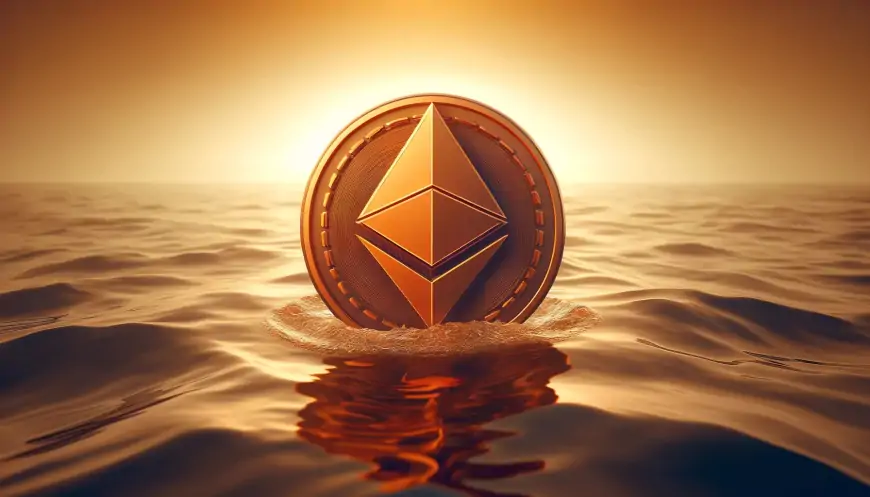Comparison between DeFi summer 2024 and DeFi summer 2020: An ultimate guide
Explore the evolution of decentralized finance (DeFi) from Summer 2020 to Summer 2024, highlighting key developments and trends in the industry.

The summer of 2020, affectionately known as "DeFi Summer," was a transformative period for the crypto industry. It witnessed the rapid ascent of decentralized finance (DeFi) platforms like MakerDAO, Uniswap, Compound, and Synthetix, attracting a surge of participants with novel offerings such as liquidity pools and yield-bearing assets. This period also marked a milestone as total locked value (TVL) in DeFi protocols surpassed $1 billion for the first time, setting the stage for broader adoption and innovation.
As we reflect on the evolution from 2020 to 2024, the DeFi landscape has grown exponentially. Today, TVL in the DeFi sector has skyrocketed to over $100 billion, highlighting its resilience and expanding influence within the broader financial ecosystem. Despite fluctuations in crypto markets, the underlying infrastructure and applications of DeFi continue to mature, shaping a new era of decentralized finance that is poised for further growth and development.
Comparison of DeFi metrics: Summer 2020 vs Summer 2024
| Metric | June 2020 | June 2024 |
| Total market capitalization of cryptocurrencies | $260 billion | $2.27 trillion |
| Total TVL | $1.8 bn | $100 bn (On June 18, 2024) |
| Ethereum's dominance in Total Value Locked (TVL) | 95% in August 2020 | 62% |
| Total TVL / Total market cap | 0.007 | 0.044 |
| Stablecoin transfer vol | $1.5 billion | $48.5 billion |
| DEX volume (monthly) | $606 million | $137 billion |
| BTC | ~ $9,600 | ~ $61,500 |
| ETH | ~ $230 | ~ $3,380 |
| COMP | ~ $230 | ~ $48 |
| UNI | ~ $4.4 (September 2020) | ~ $9.3 |
| SNX | ~ $1.9 | ~ $1.99 |
| MKR | ~ $500 | ~ $2,500 |
DeFi scene in Summer 2020
During the summer of 2020, the decentralized finance (DeFi) sector was primarily comprised of decentralized exchanges (DEXs) and lending platforms. Ethereum (ETH) hosted the majority of popular DeFi protocols, while concepts like liquidity pools and yield farming captivated crypto enthusiasts.
At that time, Bitcoin (BTC) struggled to surpass the $10,000 mark, following a significant price drop from its previous record high of over $19,000 in late 2017. Ethereum gained prominence, especially after the ICO boom of 2017 demonstrated its potential for decentralized finance applications.
Projects from the ICO era, such as Aave (formerly ETHLend), Synthetix (previously Havven), and REN (an inter-blockchain liquidity protocol), emerged to disrupt traditional finance.
One standout was Compound, a decentralized lending platform that defined the DeFi Summer of 2020 by introducing its governance token, COMP. Compound pioneered decentralization by allowing token holders to govern the protocol, setting a precedent for other projects.
Compound's token distribution model through incentives laid the foundation for modern-day airdrop strategies.
DeFi scene in Summer 2024
Currently, decentralized exchanges (DEXs), liquidity pools, collateralized crypto loans, and governance tokens are standard in the DeFi landscape. The sector has evolved beyond trading and lending to embrace new trends such as liquid staking protocols, restaking mechanisms, native yield generation, and tokenization of real-world assets (RWA). These innovations have fostered a more dynamic and diverse DeFi ecosystem, expanding its capabilities and applications across the global financial landscape. This evolution reflects ongoing efforts to integrate traditional financial functionalities with decentralized technologies, driving forward the next phase of DeFi development.
Yield takes center stage
Following Ethereum's transition from proof-of-work (PoW) to proof-of-stake (PoS) blockchain in September 2022, ETH became a yield-bearing asset virtually overnight.
ETH staking has simplified earning yield on dormant tokens, while liquid staking protocols allow users to earn yield without locking up their ETH.
Ethereum's liquid staking has gained significant traction, with Lido's protocol alone accounting for one-third of total TVL across all networks as of late-June 2024.
Recently launched Ethereum Layer 2 platform Blast offers native yield on ETH, enabling automatic staking rewards for users.
EigenLayer has emerged as a standout in DeFi Summer 2024, pioneering restaking on Ethereum to enhance yield potential and crypto economic security.
These new DeFi trends—native yield and restaking—have garnered substantial interest. EigenLayer's TVL surged from $1.3 billion to $17.9 billion within the first half of 2024, making it the second-largest DeFi protocol globally, after Lido.
Similarly, Blast, a four-month-old Ethereum L2 solution, has attracted $1.5 billion in crypto assets, positioning it as the third-largest Ethereum Layer 2 platform by TVL, following Arbitrum and Base.
MakerDAO leads the charge in Real-World Asset (RWA) tokenization
MakerDAO, a cornerstone of DeFi, leads the charge in RWA tokenization, revolutionizing the sector.
As part of its Endgame strategy, MakerDAO has evolved from a stablecoin platform to an RWA protocol, allowing crypto users to access off-chain assets like US Treasury bonds.
As of June 27, 2024, data from makerburn.com shows that 38% ($1.95 billion) of MakerDAO's collateralized stablecoin DAI is backed by RWA such as cash and short-term government bonds.
MakerDAO's move into RWA has sparked debate: proponents argue that RWA collateralization can shield DAI from crypto market volatility, while critics express concerns about DAI's decentralization and susceptibility to traditional financial influences.
Fresh stablecoins emerging in DeFi Summer
This summer saw the emergence of new stablecoin designs in the DeFi market. Unlike the algorithmic stablecoins that caused industry turmoil in 2022, the focus is now on innovations like Ethena's USDe, termed as a "synthetic dollar."
USDe maintains its peg to the US dollar using Ethereum staking, backed by staked ETH. To stabilize its value, USDe utilizes short ETH hedges on exchanges for a delta-neutral dollar position.
Moreover, users can stake USDe to earn sUSDe, a yield-bearing token deriving income from staked ETH and funding rates from short ETH positions—termed by Ethena as the "internet bond."
DeFiLlama reports USDe's circulation surged from $85.9 million at the beginning of 2024 to $3.57 billion by late June 2024.











































